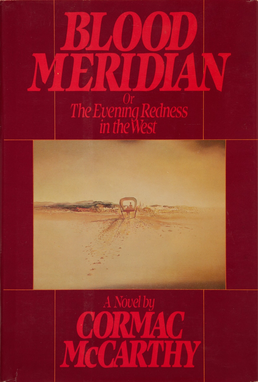Part 6
byPart 6 of Blood Meridian dives deep into the bleak and unforgiving existence of the prisoners, where the tension of their dire circumstances permeates every aspect of their daily life. As the day breaks, the men, shackled and under the watchful eyes of a merciless overseer, are forced to gather refuse, a grim task that illustrates their complete dehumanization. Their surroundings are stark—barren streets and high windows allowing only muted light to seep through—emphasizing the heavy sense of entrapment. The Kid and Toadvine, alongside their fellow prisoners, reflect on their situation, unable to find any real connection to the world around them. They are physically present but emotionally distant, each man grappling with his own internal struggles, while the harsh environment continues to wear them down. Their lack of agency and sense of belonging further fuels the growing alienation that defines their existence, setting the tone for what is to come.
Toadvine and the Kid’s conversation soon turns to more unsettling topics as they discuss their predicament and the looming threat of “old Brassteeth.” This mention shifts the narrative from casual commentary to one tinged with apprehension and anxiety, highlighting the ever-present danger in their lives. The Kid, although outwardly dismissing the overseer and praying for his safety, begins to display signs of internal conflict and skepticism. The dynamics between the two men reflect a growing awareness that their shared fate is not one of mere survival but of navigating the complexities of power, control, and violence. As the day progresses, the group is introduced to a procession involving a priest and idol, which further deepens the sense of ritualistic and oppressive forces shaping their world. The prisoners’ brief act of respect, removing their hats as the procession passes, reflects a fleeting connection to something higher, a brief reminder of humanity in an otherwise dehumanizing environment.
The chapter also explores the prisoners’ past lives through stories shared over meals, where brutality and suffering are recurring themes. A veteran recounts the violence of previous conflicts, describing in vivid detail the psychological and physical toll of war. These tales serve as a stark backdrop for the men’s camaraderie, which is born out of their shared experiences with death and destruction. There is a dark comfort in their mutual understanding, but there is also an underlying sense of nihilism that pervades their interactions. Even amidst the horror, moments of dark humor and quiet introspection surface, offering brief respites from the weight of their existence. Toadvine’s mention of Brassteeth, a man whose unique characteristics might be exploited, foreshadows the upcoming shift in the group’s mindset. This suggests that, within this environment, every individual is seen as either a resource or an obstacle, reinforcing the growing sense of brutality that defines their journey.
As they move through their bleak surroundings, the gold seekers they encounter represent more than just individuals pursuing wealth; they embody the destructive force of greed that propels many of the group’s actions. The mere sight of these seekers further highlights the pervasive desire for wealth and power that drives individuals to abandon any moral code. Toadvine’s comment about Glanton, a man with a contract for scalps, hints at the turning point for the group. With Glanton’s involvement, the prisoners’ focus shifts, and the potential for survival through violence and exploitation becomes an increasingly likely option. This shift in focus reveals the mercenary mentality taking root, and the men’s future interactions are shaped by this mindset, setting the stage for the violent encounters that lie ahead. In this chapter, McCarthy masterfully weaves together themes of survival, brutality, and the human desire for control, drawing the reader deeper into a world where morality is continually bent to serve the brutal demands of existence.

